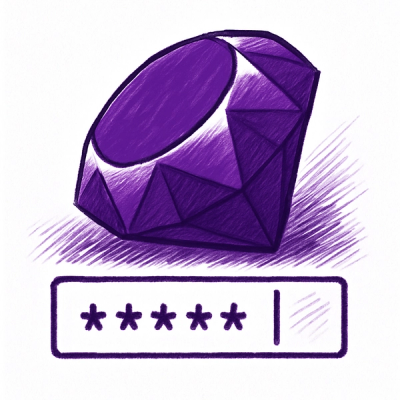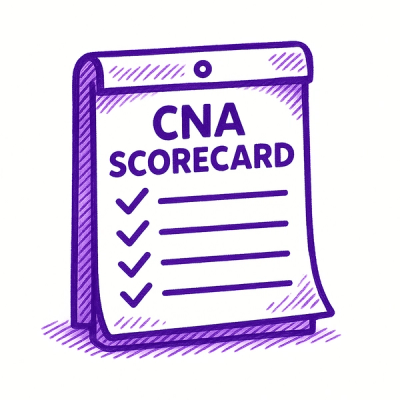
Research
/Security News
60 Malicious Ruby Gems Used in Targeted Credential Theft Campaign
A RubyGems malware campaign used 60 malicious packages posing as automation tools to steal credentials from social media and marketing tool users.
check-code-coverage
Advanced tools
Utilities for checking the coverage produced by NYC against extra or missing files

Utilities for checking the coverage produced by NYC against extra or missing files
npm i -D check-code-coverage
# check if .nyc_output/out.json has files foo.js and bar.js covered and nothing else
npx only-covered foo.js bar.js
Watch these short videos to see these tools in action:
Checks if the file is present in the output JSON file and has 100% statement coverage
# check if .nyc_output/out.json has 100% code coverage for main.js
npx check-coverage main.js
# read coverage report from particular JSON file
check-coverage --from examples/exclude-files/coverage/coverage-final.json main.js
The file has to end with "main.js". You can specify part of the path, like this
npx check-coverage src/app/main.js
You can pass multiple filenames
npx check-coverage main.js src/person.js
Check if the coverage JSON file only the given list of files and nothing else. By default only-covered script reads .nyc_output/out.json file from the current working directory. You can specify a different file using --from parameter.
# check if coverage has info about two files and nothing else
only-covered src/lib/utils.ts src/main.js
# read coverage from another file and check if it only has info on "main.js"
only-covered --from examples/exclude-files/coverage/coverage-final.json main.js
If you generate coverage report using reporter json-summary, you can check the total statements percentage
check-total
# with default options
check-total --from coverage/coverage-summary.json --min 80
The command exits with 0 if the total is above or equal to the minimum number. If the code coverage is below the minimum, the command exits with code 1. On most CIs any command exiting with non-zero code fails the build.
If your README.md includes Shields.io badge, like this

You can update it using statements covered percentage from coverage/coverage-summary.json by running
update-badge
If the coverage summary has 96%, then the above badge would be updated to

You can change the JSON summary filename to read coverage from:
update-badge --from path/to/json/summary/file.json
You can also skip reading file and set the coverage number directly
update-badge --set 78
update-badge --set 78%
Related project: dependency-version-badge
If you run your tests on GitHub Actions, there is an easy way to add commit status with code coverage percentage. From your CI workflow use command:
- name: Set code coverage commit status 📫
run: npx -p check-code-coverage set-gh-status
env:
GITHUB_TOKEN: ${{ secrets.GITHUB_TOKEN }}
Which should show a commit status message like:

This script reads the code coverage summary from coverage/coverage-summary.json by default (you can specific a different file name using --from option) and posts the commit status, always passing for now.
If there is a coverage badge in the README file, you can add 2nd status check. This check will read the code coverage from the README file (by parsing the badge text), then will set a failing status check if the coverage dropped more than 1 percent. Tip: use this check on pull requests to ensure tests and code are updated together before merging.
- name: Ensure coverage has not dropped 📈
run: npx -p check-code-coverage set-gh-status --check-against-readme
env:
GITHUB_TOKEN: ${{ secrets.GITHUB_TOKEN }}

When setting a status on a GitHub pull request, you need to use SHA of the merged commit. You can pass it as GH_SHA environment variable.
- name: Ensure coverage has not dropped 📈
run: npx -p check-code-coverage set-gh-status --check-against-readme
env:
GITHUB_TOKEN: ${{ secrets.GITHUB_TOKEN }}
GH_SHA: ${{ github.event.after }}
To see verbose log messages, run with DEBUG=check-code-coverage environment variable
FAQs
Utilities for checking the coverage produced by NYC against extra or missing files
The npm package check-code-coverage receives a total of 8,125 weekly downloads. As such, check-code-coverage popularity was classified as popular.
We found that check-code-coverage demonstrated a not healthy version release cadence and project activity because the last version was released a year ago. It has 1 open source maintainer collaborating on the project.
Did you know?

Socket for GitHub automatically highlights issues in each pull request and monitors the health of all your open source dependencies. Discover the contents of your packages and block harmful activity before you install or update your dependencies.

Research
/Security News
A RubyGems malware campaign used 60 malicious packages posing as automation tools to steal credentials from social media and marketing tool users.

Security News
The CNA Scorecard ranks CVE issuers by data completeness, revealing major gaps in patch info and software identifiers across thousands of vulnerabilities.

Research
/Security News
Two npm packages masquerading as WhatsApp developer libraries include a kill switch that deletes all files if the phone number isn’t whitelisted.